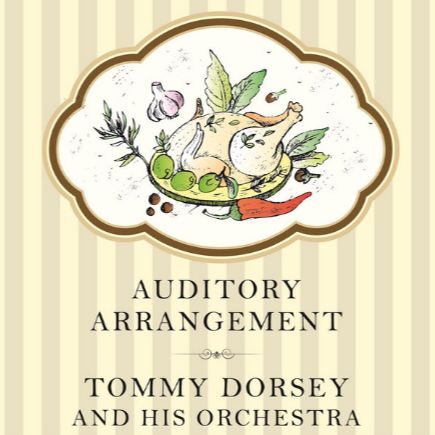Come Rain or Come Shine: entre passion inaltérable et lyrisme sophistiqué
Composé en 1946 par Harold Arlen, sur des paroles de Johnny Mercer, Come Rain or Come Shine s’impose comme l’un des standards les plus expressifs du répertoire vocal jazz. Créée pour la comédie musicale St. Louis Woman, cette ballade à la structure harmonique sobre mais subtile a traversé les époques, portée par une intensité émotionnelle rarement égalée.
Le spectacle fut un échec commercial et fut suspendu après 113 représentations, mais Come Rain or Come Shine, lancée sur scène par Ruby Hill et Harold Nicholas, deviendra très populaire. Elle mêle le lyrisme d’Arlen, maître des contrastes mélodiques, à la poésie épurée de Mercer, dans une déclaration d’amour inconditionnelle qui transcende les styles et les générations.
Derrière une apparente simplicité se cache une œuvre d’une grande richesse interprétative. Chaque reprise révèle une facette différente: dramatique chez Billie Holiday, feutrée chez Sarah Vaughan, brillante et théâtrale avec Judy Garland ou Barbra Streisand, ancrée dans le swing pour Ray Charles, ou réinventée en jazz modal par Bill Evans.
Ce pouvoir de réinvention tient à la souplesse du matériau initial: une mélodie large, ouverte, propice à la variation, et des accords qui offrent un terrain fertile pour l’improvisation. L’interprétation de Diane Schuur en 1986 a reçu un Grammy pour le meilleur enregistrement vocal de jazz féminin.
L’éclat d’un big band à son apogée
Enregistrée le 31 janvier 1946 à New York, cette version de Come Rain or Come Shine incarne l’élan final de l’ère des big bands, alors à leur apogée dans le paysage du jazz américain. Tommy Dorsey, figure majeure du swing, y dirige un orchestre au sommet de son art, alliant maîtrise instrumentale et raffinement orchestral.
À ses côtés, Sy Oliver, chanteur et arrangeur visionnaire, donne à cet enregistrement une profondeur nouvelle. Ancien collaborateur de Jimmie Lunceford, Oliver avait déjà révolutionné l’écriture pour big band par son sens du rythme et ses harmonies audacieuses.
Dans cette interprétation de Come Rain or Come Shine, Dorsey déploie la pleine expressivité de son trombone, avec un phrasé limpide et une sensibilité maîtrisée. L’orchestre, superbement agencé, fait dialoguer cuivres et bois dans un équilibre subtil, où chaque ligne instrumentale trouve sa place. La voix de Sy Oliver, chaude et nuancée, incarne quant à elle toute l’ambiguïté émotionnelle du texte : entre espoir fidèle et résignation douce-amère, son interprétation révèle une richesse expressive rare.
Come Rain or Come Shine: entre pasión inalterable y lirismo sofisticado
Compuesta en 1946 por Harold Arlen, con letra de Johnny Mercer, Come Rain or Come Shine se impone como uno de los estándares más expresivos del repertorio vocal del jazz. Escrita para el musical St. Louis Woman, esta balada de estructura armónica sobria pero sutil ha atravesado las décadas impulsada por una intensidad emocional pocas veces igualada.
El espectáculo fue un fracaso comercial y se suspendió tras 113 funciones, pero Come Rain or Come Shine, estrenada en escena por Ruby Hill y Harold Nicholas, alcanzó gran popularidad. Fusiona el lirismo de Arlen —maestro en contrastes melódicos— con la poesía depurada de Mercer, en una declaración de amor incondicional que trasciende estilos y generaciones.
Bajo su aparente simplicidad se oculta una obra de enorme riqueza interpretativa. Cada versión revela una dimensión distinta: dramática con Billie Holiday, íntima con Sarah Vaughan, brillante y teatral en las voces de Judy Garland o Barbra Streisand, profundamente swing con Ray Charles o reinterpretada en clave modal por Bill Evans.
Este poder de reinvención se explica por la flexibilidad del material original: una melodía amplia, abierta, que invita a la variación, y una secuencia de acordes ideal para la improvisación. La interpretación de Diane Schuur en 1986 recibió un premio Grammy al mejor registro vocal de jazz femenino.
El esplendor de una big band en su apogeo
Grabada el 31 de enero de 1946 en Nueva York, esta versión de Come Rain or Come Shine encarna el impulso final de la era de las big bands, entonces en su punto culminante dentro del panorama del jazz estadounidense. Tommy Dorsey, figura central del swing, dirige aquí una orquesta en plena madurez artística, combinando dominio instrumental y refinamiento orquestal.
A su lado, Sy Oliver, cantante y arreglista visionario, aporta una nueva profundidad a esta grabación. Excolaborador de Jimmie Lunceford, Oliver ya había revolucionado la escritura para big band con su sentido del ritmo y sus armonías audaces.
En esta interpretación de Come Rain or Come Shine, Dorsey despliega toda la expresividad de su trombón, con un fraseo claro y una sensibilidad perfectamente controlada. La orquesta, cuidadosamente estructurada, establece un diálogo equilibrado entre metales y maderas, donde cada línea instrumental ocupa su lugar con precisión. La voz de Sy Oliver, cálida y matizada, encarna toda la ambigüedad emocional del texto: entre esperanza fiel y resignación melancólica, su interpretación revela una expresividad inusualmente rica.
Come Rain or Come Shine: tra passione incrollabile e lirismo raffinato
Composta nel 1946 da Harold Arlen, su testo di Johnny Mercer, Come Rain or Come Shine si è affermata come uno degli standard più intensi e suggestivi del repertorio jazz vocale. Scritta per il musical St. Louis Woman, questa ballata dalla struttura armonica sobria ma raffinata ha attraversato il tempo, sospinta da un’emozione vibrante e senza tempo.
Lo spettacolo fu un insuccesso commerciale e fu interrotto dopo 113 repliche, ma Come Rain or Come Shine, lanciata in scena da Ruby Hill e Harold Nicholas, divenne presto un brano molto popolare. Arlen, maestro nei contrasti melodici, unisce qui il suo lirismo alla purezza poetica di Mercer, in una dichiarazione d’amore assoluto che supera epoche e generi.
Dietro la sua apparente semplicità, si cela una ricchezza interpretativa straordinaria. Ogni rilettura ne svela un volto nuovo: drammatica con Billie Holiday, intima con Sarah Vaughan, teatrale e scintillante con Judy Garland o Barbra Streisand, immersa nello swing con Ray Charles, o esplorata in chiave modale da Bill Evans.
La forza di questo brano risiede nella duttilità della sua struttura: una melodia ampia, aperta, ideale per la variazione, e una progressione armonica che stimola l’improvvisazione. L’interpretazione di Diane Schuur del 1986 vinse il Grammy Award per la miglior performance vocale jazz femminile.
Lo splendore di una big band al suo apice
Registrata il 31 gennaio 1946 a New York, questa versione di Come Rain or Come Shine rappresenta l’ultimo slancio dell’epoca delle big band, allora al culmine nel panorama del jazz americano. Tommy Dorsey, figura di spicco dello swing, dirige un’orchestra al massimo del suo splendore, coniugando padronanza strumentale e raffinatezza orchestrale.
Accanto a lui, Sy Oliver, cantante e arrangiatore visionario, conferisce a questa registrazione una nuova profondità. Ex collaboratore di Jimmie Lunceford, Oliver aveva già rivoluzionato la scrittura per big band con il suo senso del ritmo e le sue armonie audaci.
In questa interpretazione di Come Rain or Come Shine, Dorsey mette in mostra tutta l’espressività del suo trombone, con un fraseggio limpido e una sensibilità perfettamente controllata. L’orchestra, splendidamente orchestrata, fa dialogare ottoni e legni in un equilibrio sottile, in cui ogni linea strumentale trova la propria collocazione. La voce di Sy Oliver, calda e sfumata, incarna tutta l’ambiguità emotiva del testo: tra speranza fedele e rassegnazione malinconica, la sua interpretazione rivela una ricchezza espressiva rara.
Come Rain or Come Shine: unwavering passion and sophisticated lyricism
Composed in 1946 by Harold Arlen, with lyrics by Johnny Mercer, Come Rain or Come Shine stands as one of the most emotionally resonant standards in the vocal jazz canon. Written for the musical St. Louis Woman, this ballad—modest in structure yet harmonically nuanced—has endured through the decades, carried by a rare emotional intensity.
Though the show itself was a commercial failure, closing after 113 performances, Come Rain or Come Shine, first introduced on stage by Ruby Hill and Harold Nicholas, quickly gained widespread popularity. It blends Arlen’s melodic richness—he was a master of contrast—with Mercer’s distilled poetry, forming a timeless declaration of unconditional love that transcends styles and generations.
Beneath its surface simplicity lies a composition of great interpretive depth. Each version brings out a new shade: haunting with Billie Holiday, intimate with Sarah Vaughan, theatrical and radiant with Judy Garland or Barbra Streisand, grounded in swing with Ray Charles, or reimagined through modal jazz by Bill Evans.
Its versatility stems from the flexibility of its core: an open, spacious melody inviting variation, and a harmonic structure ripe for improvisation. Diane Schuur’s 1986 rendition earned her a Grammy Award for Best Female Jazz Vocal Performance.
The brilliance of a big band at its peak
Recorded on January 31, 1946, in New York, this version of Come Rain or Come Shine captures the final surge of the big band era, then at its peak in the American jazz landscape. Tommy Dorsey, a key figure of swing, leads an orchestra performing at the height of its artistry, blending instrumental mastery with orchestral finesse.
At his side is Sy Oliver, a visionary vocalist and arranger, who adds a new depth to the recording. A former collaborator of Jimmie Lunceford, Oliver had already transformed big band arranging with his keen rhythmic sense and bold harmonies.
In this rendition of Come Rain or Come Shine, Dorsey showcases the full expressive power of his trombone, marked by clear phrasing and controlled sensitivity. The orchestra, impeccably arranged, orchestrates a subtle dialogue between brass and woodwinds, where every instrumental line finds its place. Sy Oliver’s voice, warm and nuanced, captures the emotional ambiguity of the lyrics: between faithful hope and bittersweet resignation, his performance reveals a rare expressive richness.


